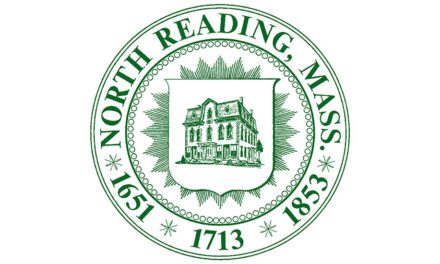Published in the November 3, 2016 edition
By BOB TUROSZ
NORTH READING — When the state released MCAS and PARCC scores from the tests taken by Massachusetts students in the spring of 2016, local school officials were pleased to see that North Reading students once again performed well on the exams.
This year local students in grades 3–8 took the PARCC (Partnership for Assessment of Readiness for College and Careers) exams, while grades 5 and 8 took MCAS science. Grade 10 took the MCAS exams in English, Math and Science.
Two of the town’s five schools, the Batchelder and Hood elementary schools are identified as “Level One” schools, the highest level of performance. The Batchelder was named one of only 49 schools in the state “Commended for High Achievement” for exemplary performance.
The other three schools in town, the Little elementary, the Middle and High Schools maintained their “Level Two” status, which is “reflective of very high achievement on the performance of students,” said Superintendent Jon Bernard. Schools are classified as “Level One” or “Level Two” if they are among the highest 80 percent of all similar schools statewide.
“It is significant that all of North Reading’s schools are classified in these two top tiers,” Bernard added.
“There are some things we know we want to focus in on and we’ve begun to do that,” said Bernard. “Largely, the story is good. To draw comparisons from year to year is difficult because we’re transitioning to something new in the state assessments.”
Assistant Superintendent Dr. Patrick Daly agreed. “This is a time of transition with the assessments and the accountability system and it’s very important right now that we compare our own schools on a year to year basis to ourselves. The state did not release comparison data from any students taking PARCC grades 3 through 8 and there are many reasons for that. State assessment is very important but it’s only one data point. There are many other places we’re looking for the benchmark.”
Last year the schools created “data leader” positions at all five schools – a designated person in each building serving as the “data guru” for a stipend. This was only the second year for that. “Forget what the data says, that’s a positive step for that. New this year: Bernard and Dr. Daly have met with each of the five principals and had meetings focused on their school’s data.
Starting this year, North Reading students in grades 4 through 8 will be taking their assessment exams on computer, following the state–recommended phase–in schedule. The town will continue to follow the state’s recommendations for phase–in and all testing will be done on computers by 2019.
Dr. Daly will make an in depth presentation on the MCAS and PARCC scores to the School Committee on Monday, Nov. 7.
MCAS Grade 10
In grade 10, 97 percent of the sophomores were proficient or higher on the MCAS exam – 60 percent scored Advanced and 37 percent were Proficient, the two highest categories. Only 2 percent were judged to need need improvement and one percent failed.
In the MCAS math exam, 89 percent of local sophomores were proficient or higher – 63 percent were judged Advanced and 26 percent were Proficient. Nine percent were said to need improvement and 2 percent failed.
Scores were also high in the MCAS science exam, where 88 percent of 10th graders were proficient or higher, including 38 percent who were Advanced and 50 percent who were proficient. Eleven percent needed improvement and one percent failed.
MCAS Grade 8
In eighth grade MCAS, 40 percent of the students who took the science exam were rated proficient or higher. This includes 6 percent who were Advanced, and 33 percent who were proficient. Fifty one percent of the eighth graders were judged to need improvement and 10 percent failed.
MCAS Grade 5
Grade 5 students took the MCAS science exam and 75 percent scored proficient or higher. This includes the 33 percent who scored Advanced and the 42 percent who were Proficient. Twenty percent were reported to need improvement and 5 percent failed.
PARCC
Generally speaking, North Reading students in grades 3 through 8 took the PARCC (Partnership for Assessment of Readiness for College and Careers) last spring and the scoring is somewhat different. Students are rated according to the achievement level they earned: Level 5, Exceeded Expectations; Level 4, Met Expectations; Level 3, Approached Expectations; Level 2, Partially Met Expectations and Level 1, Did not meet Expectations.
Grade 3
In English, 79 percent of the third graders tested scored in the two highest categories, Met or Exceeded Expectations. This includes 9 percent in Level 5 and 70 percent in Level 4. Seventeen percent achieved Level 3, (Approached Expectations), 3 percent were in Level 2 (Partially Met Expectations) and one percent Did Not Meet Expectations.
In Math, 84 percent of the third graders tested in Level 4 or 5. This includes the 21 percent in Level 5 and 64 percent in Level 4. Twelve percent were in Level 3, 3 percent were in Level 2 and no one failed.
Grade 4
In English, 80 percent of the third grade students tested scored in Level 4 or 5. This is comprised of the 23 percent in Level 5 and 57 percent who scored in Level 4. Eighteen percent of students were in Level 3, one percent were in Level 2 and one percent failed.
In math, 69 percent were Level 4 or 5. This includes 10 percent in Level 5 and 58 percent in Level 4. Twenty three percent were Level 3, 6 percent were Level 2 and one percent failed.
Grade 5
In English, 84 percent made it into Level 4 or 5. Thirteen percent were Level 5 and 71 percent were level 4. Fifteen percent made it to Level 3. Two percent were placed in Level 2 and no one failed.
Seventy percent made it into Level 4 or 5 in the math exam. This includes the 16 percent who were Level 5 and the 53 percent who were Level 4. Twenty six percent were in Level 3, 5 percent were Level 2 and no one failed.
Grade 6
In English, 79 percent placed in Level 4 or 5. This includes 15 percent in Level 5 and 63 percent in Level 4. Seventeen percent were in Level 3, 2 percent were in Level 2 and 2 percent were in Level 1.
Seventy–five percent of the sixth grade students placed in Level 4 or 5, including 22 percent in Level 5 and 53 percent in Level 4. Eighteen percent placed in Level 3. Level 2 had five percent of the students and 2 percent were in Level 1.
Grade 7
Sixty–seven percent were in Level 4 or 5 on the English exam, including 28 in Level 5 and 40 percent in Level 4. Level 3 had 23 percent, Level 2 had 9 percent and no one failed.
In math, 71 percent placed in Level 4 or 5, including the 18 percent in Level 5 and the 53 percent in Level 4. Twenty one percent were in Level 3, 5 percent were in Level 2 and 4 percent were in Level 1.
Grade 8
In English, there were 70 percent who placed in Level 4 or 5. This included the 14 percent in Level 5 and the 56 percent in Level 4. Level 3 was where 23 of the students placed, followed by 7 percent in Level 2 and one percent in Level 1.
Sixty–two percent of the eighth grades placed in Level 4 or 5 for math. Six percent were in Level 5, 56 percent were in Level 4, 24 percent were in Level 3 , 10 percent were in Level 2 and 4 percent were in Level 1.




